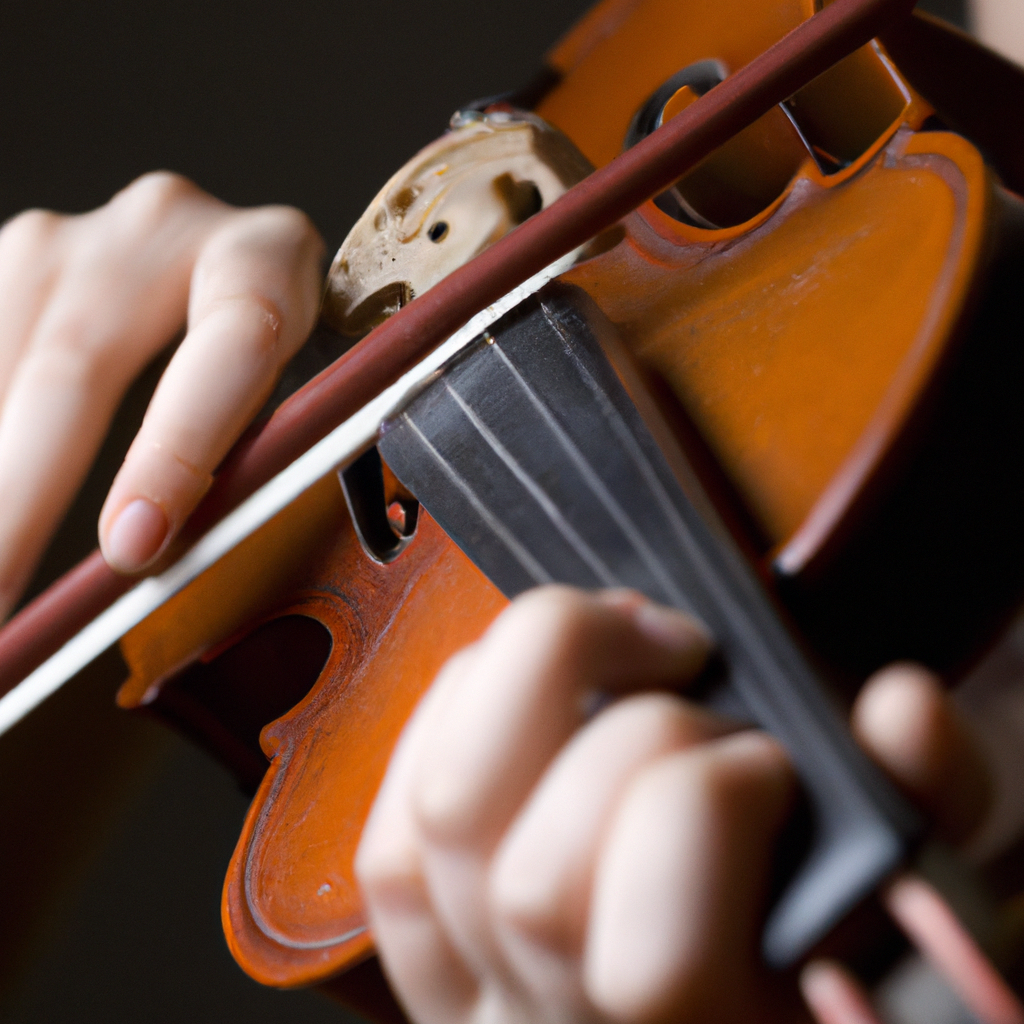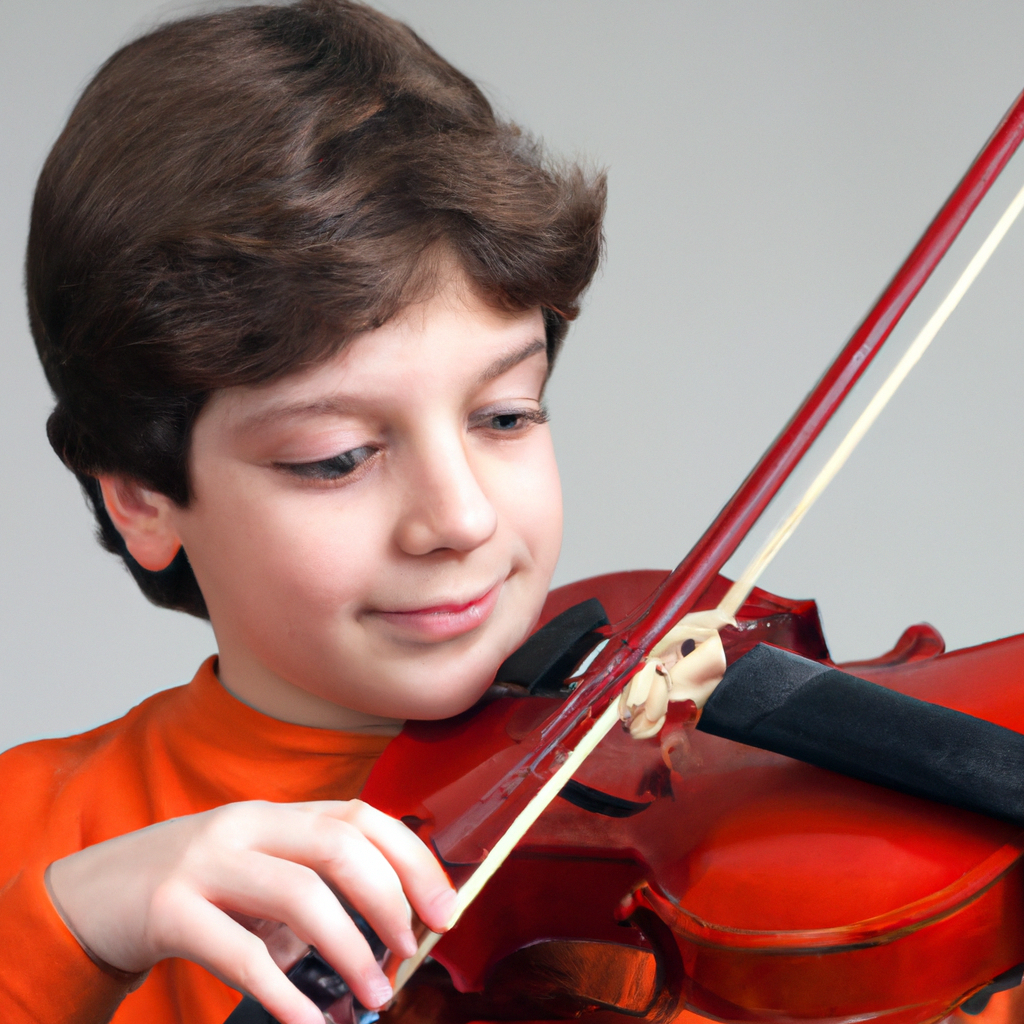
I. Introduction

Learning the violin is a rewarding and fulfilling journey that requires dedication, practice, and patience. Whether you're a beginner or an advanced player, it's essential to understand the dos and don'ts to make the most out of your violin learning experience. In this article, we will explore the key aspects to consider when learning the violin, including finding a qualified teacher, developing a practice routine, and avoiding common mistakes. Let's dive in!

II. Dos When Learning the Violin

A. Find a qualified violin teacher

One of the most important steps when learning the violin is finding a qualified teacher. A good violin teacher can guide you through the learning process, provide valuable feedback, and help you develop proper techniques. Look for a teacher who has experience working with beginners and is knowledgeable in violin pedagogy.
B. Develop a regular practice routine
Consistency is key when it comes to learning any instrument, including the violin. Set aside dedicated practice time each day to work on your skills. Even if you can only practice for a short period, regular practice will yield better results than sporadic, long sessions. Find a time of day that works best for you and commit to it.
C. Warm up before practicing
Before diving into your practice routine, it's important to warm up your muscles and prepare your body for playing. Start with simple stretching exercises to loosen up your arms, shoulders, and fingers. This will help prevent injuries and promote better playing technique.
D. Focus on proper posture and positioning
Proper posture and positioning are crucial for playing the violin effectively. Make sure to sit or stand with a straight back, relax your shoulders, and keep your head up. Your left hand should comfortably support the neck of the violin, while your right hand holds the bow with a relaxed grip.
E. Start with simple songs and scales
When starting out, it's best to begin with simple songs and scales. This allows you to focus on developing proper technique and intonation. Mastering basic skills and building a strong foundation will set you up for success as you progress to more complex pieces.
F. Use a metronome to develop a sense of rhythm
Rhythm is a fundamental aspect of music, and using a metronome can help you develop a solid sense of timing. Practice playing along with a metronome to improve your accuracy and precision. Start at a slower tempo and gradually increase the speed as you become more comfortable.
G. Practice with a variety of bowing techniques
Experimenting with different bowing techniques is essential for expanding your playing skills. Practice long, sustained bows, short staccato strokes, and everything in between. This will not only improve your bow control but also add depth and dynamics to your playing.
H. Take breaks to avoid fatigue and prevent injury
Playing the violin requires physical exertion, and it's important to listen to your body. Take short breaks during practice sessions to rest your muscles and prevent fatigue. This will help you avoid injuries and maintain a healthy practice routine.
I. Join a violin community or orchestra for support and motivation
Being part of a violin community or orchestra can provide valuable support, motivation, and inspiration. Surrounding yourself with fellow violinists can help you stay motivated and share experiences and tips. Look for local orchestras, music schools, or online communities to connect with other violin enthusiasts.
III. Don'ts When Learning the Violin
A. Don't rush the learning process
Learning the violin is a journey that takes time and patience. Avoid rushing through the learning process and focus on building a strong foundation. Take the time to master each technique before moving on to more advanced concepts.
B. Avoid bad habits in hand and finger positioning
Developing proper hand and finger positioning is crucial for playing the violin correctly. Avoid forming bad habits, such as collapsing your wrist or pressing too hard on the strings. These habits can hinder your progress and make it harder to achieve a good sound.
C. Don't neglect proper bowing techniques
The bow is a vital part of violin playing, and neglecting proper bowing techniques can limit your progress. Practice maintaining a consistent bow grip, using the correct amount of bow pressure, and creating smooth, even strokes. This will help you produce a beautiful and controlled sound.
D. Avoid excessive tension in the body
Tension in the body can negatively impact your playing and lead to discomfort or injury. Be mindful of any tension in your shoulders, neck, or hands, and consciously relax those areas. Playing the violin should feel fluid and effortless.
E. Don't skip warm-up exercises
Warm-up exercises are essential for preparing your body and mind for practice. Skipping warm-ups can increase the risk of injury and hinder your progress. Dedicate a few minutes to stretching and warming up your muscles before each practice session.
F. Avoid comparing yourself to others too much
Every violinist progresses at their own pace, and comparing yourself to others can be discouraging. Instead, focus on your own progress and celebrate your achievements, no matter how small. Remember that everyone has their own unique journey.
G. Don't neglect the importance of ear training
Developing your ear is crucial for playing the violin with accuracy and musicality. Train your ear by listening to recordings of professional violinists and practicing playing by ear. This will enhance your intonation and help you play in tune.
H. Avoid practicing for long hours without breaks
While it's important to dedicate regular practice time, it's equally important to take breaks. Practicing for long hours without breaks can lead to mental and physical fatigue. Take short breaks to rest your mind and prevent burnout.
IV. Common Mistakes to Avoid When Learning the Violin
A. Over-practicing without proper guidance
Practicing for long hours without proper guidance can lead to inefficient practicing and potential injuries. It's essential to work with a qualified teacher who can provide feedback, correct mistakes, and guide your practice sessions.
B. Neglecting to tune the violin regularly
A well-tuned violin is crucial for producing a good sound. Neglecting to tune your violin regularly can lead to intonation issues and hinder your progress. Invest in a good quality tuner and make it a habit to tune your violin before each practice session.
C. Using poor quality or incorrect accessories
The quality of your accessories, such as the bow, strings, and shoulder rest, can greatly impact your playing. Using poor quality or incorrect accessories can limit your progress and hinder your ability to produce a good sound. Consult with your teacher or a violin expert to ensure you have the right accessories for your instrument.
D. Not seeking feedback or corrections from a teacher
Feedback from a qualified teacher is invaluable when learning the violin. Not seeking feedback or corrections can lead to developing bad habits and hinder your progress. Be open to feedback and actively seek guidance from your teacher to continuously improve.
E. Ignoring the importance of music theory
While playing the violin involves physical technique, understanding music theory is equally important. Ignoring the importance of music theory can limit your musical understanding and hinder your ability to interpret and express music. Dedicate time to learn music theory concepts alongside your practical practice.
V. How to Choose the Right Violin for Beginners
A. Consider the budget
When choosing a violin, it's important to consider your budget. Violins come in a wide range of prices, and it's essential to find one that fits within your budget while still offering good quality. Don't forget to consider the cost of accessories, such as the bow and case.
B. Seek advice from a violin teacher or expert
Consulting with a violin teacher or expert can help you make an informed decision when choosing a violin. They can provide guidance on what to look for in terms of sound quality, playability, and durability. Take advantage of their expertise to find the best violin for your needs.
C. Test the sound and quality of different violins
When possible, test the sound and quality of different violins before making a purchase. Visit a music store or attend violin exhibitions to try out different instruments. Pay attention to the tone, projection, and responsiveness of each violin to find one that resonates with you.
D. Ensure proper sizing and fitting
For beginners, it's important to ensure that the violin is the correct size and properly fits the player. Violins come in different sizes, and using the wrong size can lead to discomfort and hinder technique development. Consult with a teacher or violin expert to determine the appropriate size for you or your child.
VI. How Long Does It Take to Learn the Violin?
A. Explain the variable factors that affect learning time
The time it takes to learn the violin varies from person to person and depends on various factors. These factors include the amount of time dedicated to practice, the quality of instruction, natural talent, and previous musical experience. It's important to remember that learning the violin is a lifelong journey.
B. Provide a general timeline for different skill levels
While the timeline for learning the violin is highly individualized, it's helpful to have a general understanding of skill levels. Beginner violinists can expect to spend several months to a year learning the basics and developing proper technique. Intermediate players typically spend a few years refining their skills, while advanced players continue to improve and explore advanced repertoire throughout their musical careers.
VII. How Often Should I Practice the Violin?
A. Discuss the importance of regular practice
Regular practice is crucial for making progress on the violin. Consistent practice allows you to build muscle memory, develop technique, and improve overall playing skills. Aim to practice at least five to six days a week to maintain steady progress.
B. Provide recommended practice durations based on skill level
The recommended practice duration varies depending on the skill level. Beginners should aim for around 20-30 minutes of focused practice per session, gradually increasing the duration as they progress. Intermediate players can benefit from practicing for 30-60 minutes, while advanced players often dedicate 60 minutes or more to their practice sessions.
VIII. How to Avoid Frustration When Learning the Violin
A. Emphasize the need for patience and perseverance
Learning the violin can be challenging at times, and it's important to approach it with patience and perseverance. Understand that progress takes time, and embrace the learning process as part of the journey. Celebrate small victories and remain motivated despite any setbacks.
B. Suggest setting realistic goals and expectations
Setting realistic goals and expectations is crucial for avoiding frustration. Break down your goals into smaller, achievable steps and celebrate each milestone along the way. Remember that learning the violin is a continuous process, and progress will come with consistent effort.
C. Encourage seeking support from fellow violinists or a teacher
When frustration arises, seeking support from fellow violinists or a teacher can make a significant difference. Share your challenges with others who understand your journey and can offer guidance and encouragement. Don't hesitate to ask for help when needed.
IX. How to Overcome Stage Fright When Performing on the Violin
A. Explore common causes of stage fright
Stage fright is a common challenge for many violinists. It can stem from fear of judgment, perfectionism, or lack of confidence. Understanding the root causes of stage fright can help you address and manage it effectively.
B. Provide strategies to manage and overcome stage fright
There are several strategies that can help manage and overcome stage fright. These include deep breathing exercises, visualization techniques, positive self-talk, and gradually exposing yourself to performance situations. Working with a teacher or coach can also provide valuable guidance and support in overcoming stage fright.
X. Frequently Asked Questions about Learning the Violin
A. How long does it take to see progress when learning the violin?
The rate of progress varies for each individual, but consistent practice and dedication can yield noticeable results within a few months. However, it's important to remember that learning the violin is a long-term commitment, and progress continues throughout a musician's lifetime.
B. Can I teach myself the violin without a teacher?
While it's possible to teach yourself some basic violin skills, having a qualified teacher is highly recommended. A teacher can provide guidance, correct mistakes, and offer personalized instruction to ensure proper technique and progress. They also provide valuable feedback and support.
C. How can I improve my bowing technique?
Improving bowing technique involves consistent practice and focused attention on proper bow grip, bow pressure, and bowing motion. Regularly practicing bowing exercises, scales, and etudes can help develop control and precision. Working with a teacher can provide specific guidance to improve your bowing technique.
D. What are some effective practice exercises for beginners?
Effective practice exercises for beginners include scales, arpeggios, and simple studies. These exercises help develop finger dexterity, intonation, and bow control. As you progress, gradually incorporate short pieces and etudes to further refine your technique.
E. How do I know if I am practicing too much or too little?
Finding the right balance of practice is essential. Pay attention to your physical and mental well-being. If you feel constantly fatigued, experiencing pain, or losing motivation, it may be a sign of over-practicing. On the other hand, if you feel like you're not making progress or not challenging yourself enough, you might need to increase your practice time.
XI. Conclusion
A. Recap the dos and don'ts when learning the violin
When learning the violin, it's essential to find a qualified teacher, develop a regular practice routine, focus on proper technique, and avoid common mistakes. Remember to take breaks, join a supportive community, and stay motivated throughout your journey.
B. Encourage readers to embrace the challenges and joys of learning the instrument
Learning the violin is a challenging yet rewarding endeavor. Embrace the challenges, celebrate your progress, and find joy in the process of making music. With dedication, patience, and the right mindset, you can unlock your full potential as a violinist. Happy practicing!